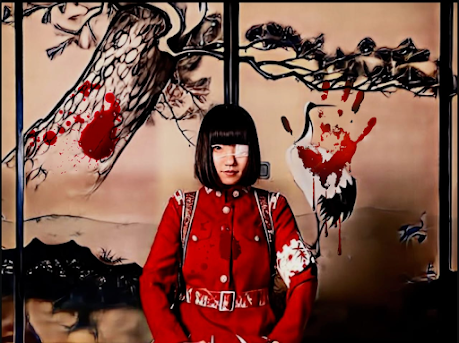Understanding the Psychology of Tsundere
Tsundere characters have captivated anime and manga enthusiasts for decades. From the fiery and stubborn taunts to the occasional moments of vulnerability, these characters exhibit a unique and complex psychology that continues to intrigue fans around the world. In this article, we delve deep into the psychology of Tsundere, unraveling the reasons behind their behavior and shedding light on their hidden emotional intricacies.
Through Tsundere characters, we gain insights into our own emotional journeys and the power of vulnerability. Their stories remind us that even those who appear tough or distant can harbor deep longings for connection and understanding. By exploring the psychology of Tsundere, we unlock a deeper understanding of human nature and the complexities that shape our relationships.
Understanding the Tsundere Archetype
The term "Tsundere" originates from the Japanese words "tsun" (meaning aloof or standoffish) and "dere" (meaning lovestruck or affectionate). Tsundere characters are typically portrayed as individuals who initially display cold or hostile behavior towards others but gradually reveal a warmer, more caring side over time. This contrasting behavior forms the core of their personality and creates a compelling dynamic for storytelling.Origins and Cultural Significance
The Tsundere archetype has its roots in Japanese culture, where it has become a prevalent character trope in various forms of media. Its popularity stems from the emotional rollercoaster it offers to audiences. The concept of Tsundere is not limited to anime and manga but has also influenced other entertainment industries globally.Psychological Analysis
- Defense Mechanisms: Tsundere characters often employ defense mechanisms as a way to protect themselves emotionally. The initial aloofness and hostility can be seen as a shield to prevent others from getting too close. This defense mechanism can stem from past traumas, fear of rejection, or a lack of trust in others.
- Fear of Vulnerability: Beneath the tough exterior, Tsundere characters harbor deep-seated insecurities and fear of vulnerability. They may have experienced emotional pain or abandonment in the past, leading them to adopt a defensive approach in relationships. By maintaining a tough demeanor, they believe they can avoid further emotional harm.
- Emotional Growth and Character Development: As the storyline progresses, Tsundere characters undergo emotional growth and character development. Through their interactions with other characters, they gradually learn to trust, open up, and express their true emotions. These moments of vulnerability make the character relatable and endearing to the audience.
- Balancing Emotional Contradictions: The key to portraying a convincing Tsundere character lies in striking a delicate balance between their cold and warm traits. Writers and creators carefully construct scenarios that challenge their emotional boundaries, forcing them to confront their fears and gradually soften their demeanor.
The Impact of Tsundere Characters
Tsundere characters have a significant impact on audiences due to their relatable struggles and emotional depth. By depicting the journey of a Tsundere character, storytellers explore themes such as personal growth, overcoming emotional barriers, and the power of love. These characters often resonate with viewers, providing a sense of connection and inspiration.Understanding Audience Fascination
The psychology of Tsundere characters creates a sense of intrigue and fascination among fans. The gradual unveiling of their softer side builds anticipation and emotional investment in their story arcs. Audience members find themselves drawn to the complexity of these characters, eagerly waiting for those moments of vulnerability and genuine affection.Interpreting Tsundere Behavior
The behavior of Tsundere characters can be interpreted in various ways, depending on individual perspectives. Some may view their actions as manipulative or emotionally abusive, while others see them as individuals struggling with their own insecurities and learning to navigate their emotions. It's important to approach these characters with a nuanced understanding, recognizing the complexities behind their behavior.Psychological Resonance
Tsundere characters resonate with audiences because they reflect aspects of human nature. Many people can relate to the fear of vulnerability and the desire to protect oneself from emotional pain. Tsundere characters serve as a reminder that behind every tough exterior, there may be underlying emotional struggles and a longing for connection.Tsundere in Real Life
While Tsundere characters are primarily fictional constructs, some argue that certain elements of their behavior can be observed in real-life individuals. People who exhibit Tsundere-like tendencies may struggle with expressing their emotions openly, resorting to defense mechanisms and alternating between aloofness and affection. It's essential to approach such individuals with empathy and understanding.Tsundere and Relationship Dynamics
The portrayal of Tsundere characters in romantic relationships raises discussions about healthy dynamics. It's crucial to differentiate between fictional storytelling and real-life interactions. In real relationships, open communication, mutual respect, and consent are vital. Tsundere dynamics should not be romanticized or used as a template for real-life relationships.The Evolution of Tsundere Characters
As storytelling and character development techniques continue to evolve, Tsundere characters may undergo transformations as well. Some modern interpretations of Tsundere move away from the traditional stereotypes and explore more nuanced portrayals. This evolution allows for diverse and complex representations that challenge preconceived notions.Conclusion
The psychology of Tsundere characters offers a fascinating glimpse into the intricacies of human emotions. From their defense mechanisms and fear of vulnerability to their gradual growth and moments of authenticity, Tsundere characters captivate audiences with their emotional complexity. As fans and observers, it is essential to appreciate the multidimensional nature of these characters and understand the boundaries between fiction and reality.Through Tsundere characters, we gain insights into our own emotional journeys and the power of vulnerability. Their stories remind us that even those who appear tough or distant can harbor deep longings for connection and understanding. By exploring the psychology of Tsundere, we unlock a deeper understanding of human nature and the complexities that shape our relationships.




Comments
Post a Comment